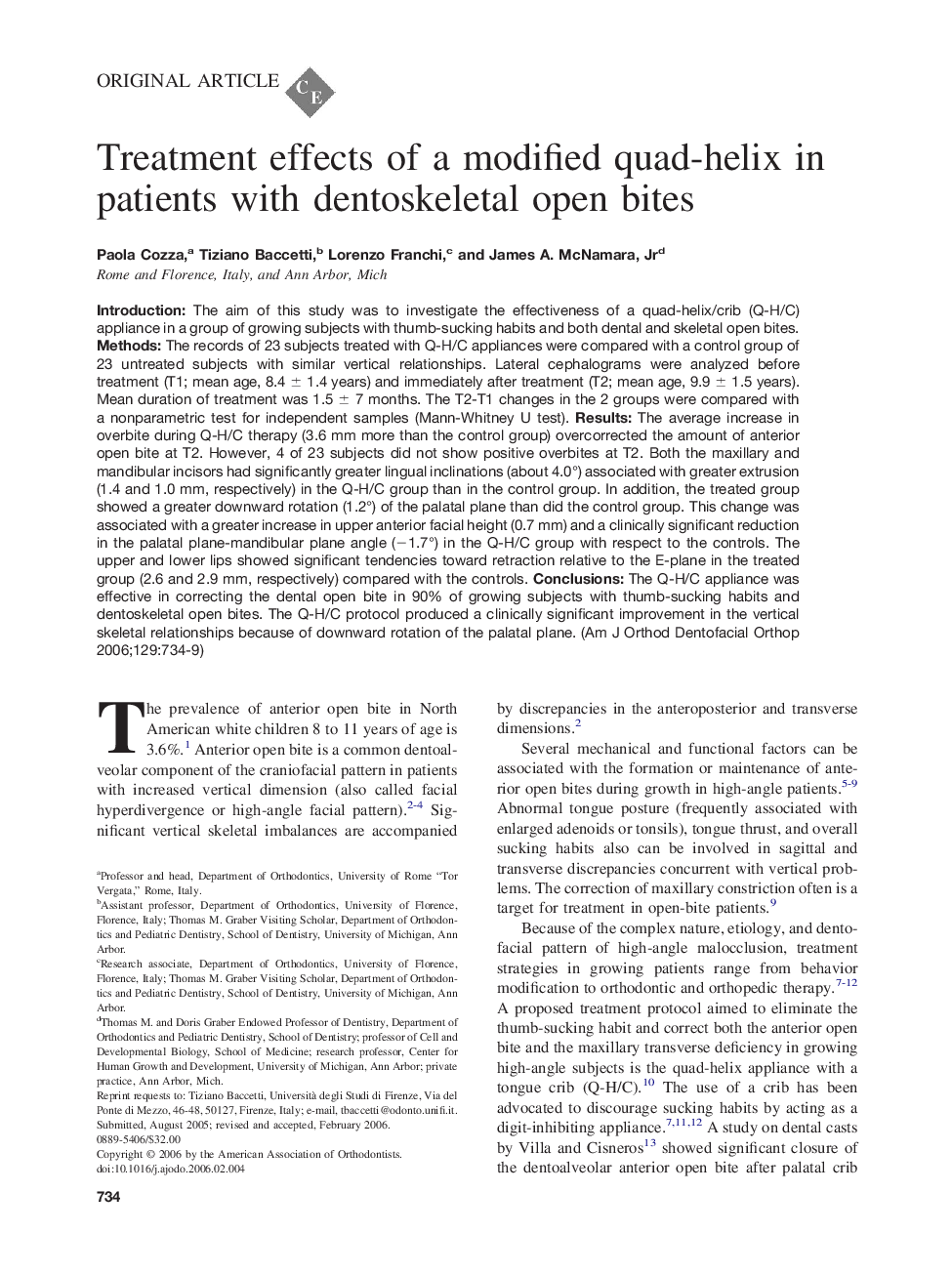| Article ID | Journal | Published Year | Pages | File Type |
|---|---|---|---|---|
| 3120153 | American Journal of Orthodontics and Dentofacial Orthopedics | 2006 | 6 Pages |
Introduction: The aim of this study was to investigate the effectiveness of a quad-helix/crib (Q-H/C) appliance in a group of growing subjects with thumb-sucking habits and both dental and skeletal open bites. Methods: The records of 23 subjects treated with Q-H/C appliances were compared with a control group of 23 untreated subjects with similar vertical relationships. Lateral cephalograms were analyzed before treatment (T1; mean age, 8.4 ± 1.4 years) and immediately after treatment (T2; mean age, 9.9 ± 1.5 years). Mean duration of treatment was 1.5 ± 7 months. The T2-T1 changes in the 2 groups were compared with a nonparametric test for independent samples (Mann-Whitney U test). Results: The average increase in overbite during Q-H/C therapy (3.6 mm more than the control group) overcorrected the amount of anterior open bite at T2. However, 4 of 23 subjects did not show positive overbites at T2. Both the maxillary and mandibular incisors had significantly greater lingual inclinations (about 4.0°) associated with greater extrusion (1.4 and 1.0 mm, respectively) in the Q-H/C group than in the control group. In addition, the treated group showed a greater downward rotation (1.2°) of the palatal plane than did the control group. This change was associated with a greater increase in upper anterior facial height (0.7 mm) and a clinically significant reduction in the palatal plane-mandibular plane angle (−1.7°) in the Q-H/C group with respect to the controls. The upper and lower lips showed significant tendencies toward retraction relative to the E-plane in the treated group (2.6 and 2.9 mm, respectively) compared with the controls. Conclusions: The Q-H/C appliance was effective in correcting the dental open bite in 90% of growing subjects with thumb-sucking habits and dentoskeletal open bites. The Q-H/C protocol produced a clinically significant improvement in the vertical skeletal relationships because of downward rotation of the palatal plane.
